
Cass County is a county in the U.S. state of Michigan. As of the 2020 Census, the population was 51,589. Its county seat is Cassopolis.
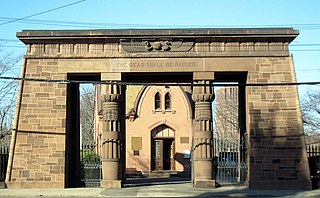
Grove Street Cemetery or Grove Street Burial Ground is a cemetery in New Haven, Connecticut, that is surrounded by the Yale University campus. It was organized in 1796 as the New Haven Burying Ground and incorporated in October 1797 to replace the crowded burial ground on the New Haven Green. The first private, nonprofit cemetery in the world, it was one of the earliest burial grounds to have a planned layout, with plots permanently owned by individual families, a structured arrangement of ornamental plantings, and paved and named streets and avenues. By introducing ideas like permanent memorials and the sanctity of the deceased body, the cemetery became "a real turning point... a whole redefinition of how people viewed death and dying", according to historian Peter Dobkin Hall. Many notable Yale and New Haven luminaries are buried in the Grove Street Cemetery, including 14 Yale presidents; nevertheless, it was not restricted to members of the upper class, and was open to all.
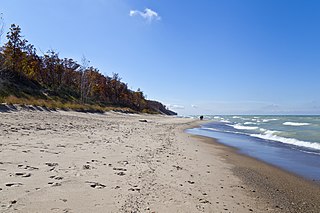
Indiana Dunes National Park is a United States national park located in northwestern Indiana managed by the National Park Service. It was authorized by Congress in 1966 as the Indiana Dunes National Lakeshore and was redesignated as the nation's 61st national park on February 15, 2019. The park runs for about 20 miles (32 km) along the southern shore of Lake Michigan and covers 15,349 acres (6,212 ha). Along the lakefront, the eastern area is roughly the lake shore south to U.S. 12 or U.S. 20 between Michigan City, Indiana, on the east and the Cleveland-Cliffs steel plant on the west. To the west of the steel plant lies West Beach and a small extension south of the steel mill continues west along Salt Creek to Indiana 249. The western area is roughly the shoreline south to U.S. 12 between the Burns Ditch west to Broadway in downtown Gary, Indiana. In addition, there are several outlying areas, including Pinhook Bog, in LaPorte County to the east; the Heron Rookery in Porter County, the center of the park; and the Calumet Prairie State Nature Preserve and the Hobart Prairie Grove, both in Lake County, the western end of the park.
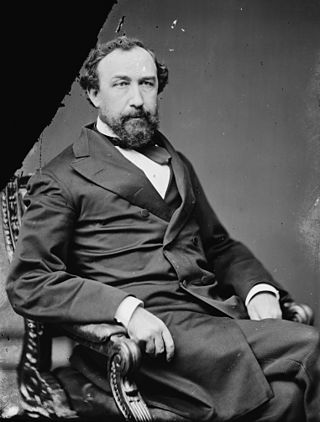
Newton Booth was an American entrepreneur and politician.

Jens Jensen was a Danish-American landscape architect.

The Lincoln Log Cabin State Historic Site is an 86-acre (0.3 km²) history park located eight miles (13 km) south of Charleston, Illinois, U.S., near the town of Lerna. The centerpiece is a replica of the log cabin built and occupied by Thomas Lincoln, father of U.S. President Abraham Lincoln. Abraham Lincoln never lived here and only occasionally visited, but he provided financial help to the household and, after Thomas died in 1851, Abraham owned and maintained the farm for his stepmother, Sarah Bush Lincoln. The farmstead is operated by the Illinois Historic Preservation Agency.

Benjamin Franklin Shively was an American politician and lawyer who served as a United States Representative and Senator from Indiana.
The Lincoln Trail Homestead State Park and Memorial is a 162-acre (66 ha) state park located on the Sangamon River in Macon County near Harristown, Illinois, United States.
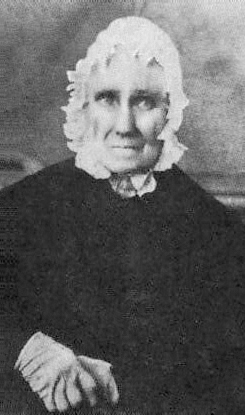
Sarah Bush Lincoln was the second wife of Thomas Lincoln and stepmother of Abraham Lincoln. She was born in Kentucky to Christopher and Hannah Bush. She married her first husband, Daniel Johnston, in 1806, and they had three children. Daniel Johnston died in 1816, and in 1819, she married widower Thomas Lincoln, joining his family with her three children.
Williams House or Williams Farm may refer to:
Walker House, and variations including Walker Homestead and Walker Barn, may refer to:
Joseph Bailly was a fur trader and a member of an important French Canadian family that included his uncle, Charles-François Bailly de Messein.
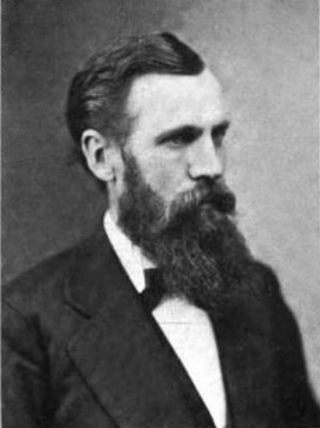
Jonas Hartzell McGowan was a politician from the U.S. state of Michigan.

William Conner was an American trader, interpreter, military scout, community leader, entrepreneur, and politician. Although Conner initially established himself as a fur trader on the Michigan and Indiana frontiers, his business interests later expanded to include ownership of Indiana farms, mills, distilleries, and mercantile shops. He was also a land speculator. Conner served the American forces in several capacities during the War of 1812, and as an interpreter and witness at several treaty negotiations with Native American tribes that resulted their removal from Indiana and established the state's geographical boundaries.

Olive Township is one of thirteen townships in St. Joseph County, in the U.S. state of Indiana. As of the 2000 census, its population was 3,914.
Bayless W. Hanna was an American lawyer, politician, and diplomat who served as the Indiana Attorney General, the U.S. Minister to Iran, and the U.S. Minister to Argentina.

George DeWitt Mason was an American architect who practiced in Detroit, Michigan, in the latter part of the 19th and early decades of the 20th centuries.
Terre Haute Lodge No. 19, F&AM is a lodge of Freemasons in Terre Haute, Indiana. It is the oldest existing organization in the city and in Vigo County with the exception of Vigo County Government.

The town of New Carlisle, abutting the LaPorte County line in Olive Township in northwestern St. Joseph County, perches on a hill overlooking the rich Terre Coupee prairie to the east. Its main street, Michigan Street, at forty-five feet is wider than the town's other streets and has been from its platting in 1835 a part of an improved thoroughfare, first the Michigan Road, later the Lincoln Highway and, finally, US 20. Two parallel railroads, Conrail and the electrically powered South Shore, run along the town's north edge at the bottom of the hill, beyond which still lies open farmland. This is largely true to the west and south as well, although in recent years commercial development has occurred at the western edge of town along US 20 at the county line, and some residential development to the south. Along US 20 to the east is a long line of ca. 1950 housing development, which until recently edged farmland between the highway and the railroads. Now much of this farmland is zoned industrial, owing largely to the construction less than 2 miles (3.2 km) away of the enormous I/N Tek steel mill, completed in 1990, and its subsidiary I/N Kote, in 1991. The district is the main commercial district on Michigan Street.
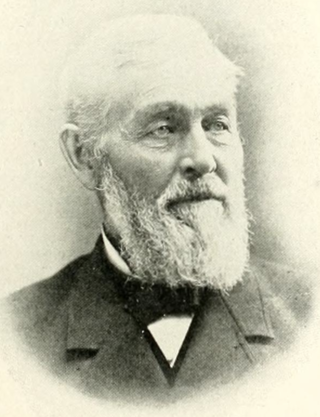
John Reynolds was a politician from Indiana. He served in the Indiana House of Representatives from 1850 to 1851 and in 1867. He served in the Indiana Senate in 1862.

















